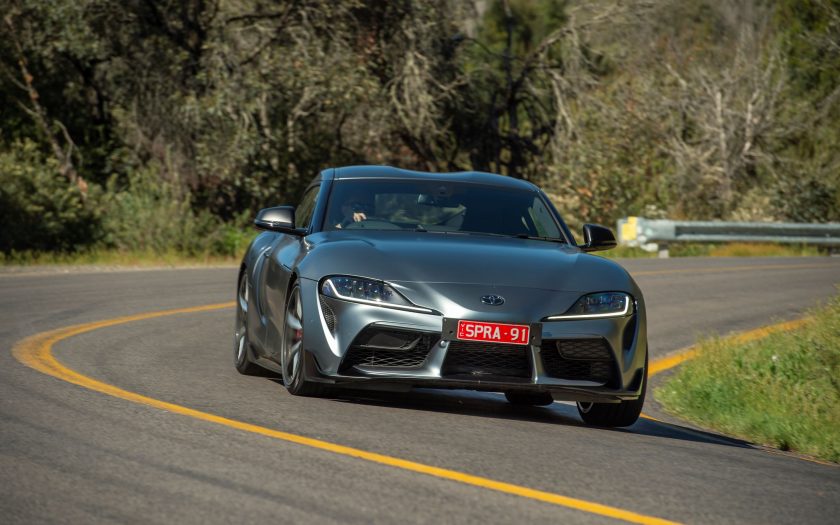Chris Riley tests the 2023 Toyota Supra GTS with pricing, specs, ride and handling, safety, verdict and everything the over-50 driver needs to know.
Summary: In reality, the Toyota Supra is a BMW, including its lovely 3.0-litre engine. Try getting in and out before you make your final purchase decision and make sure it doesn’t take out its spoiler on your driveway.
2023 Toyota Supra GTS sports coupe
Pricing: $97,380 (plus on road costs)
Options: premium paint $575, matte grey paint (GTS only) $2500, Alcantara trim (GTS only) $2500
Warranty: Five-years/unlimited km
Safety: not tested
Build location: Austria
Engine: 3.0-litre turbo intercooled DOHC six-cylinder petrol
Power: 285kW at 6500rpm
Torque: 500Nm at 5000rpm
Transmission: 8-speed sports automatic, rear-wheel drive
Body: 4379mm (long); 1854mm (wide); 1294mm (high)
Kerb weight: 1525kg
Towing capacity: 450kg
Wheels: 19-inch alloy
Tyres: 255/35 R19 (front), 275/35 R19 (rear)
Ground clearance: 115mm
Fuel tank capacity: 52 litres
Official consumption: 7.5L/100km (95 RON petrol)
Consumption on test: 9.7L/100 (300km)
seniordriver consumption on test: not tested
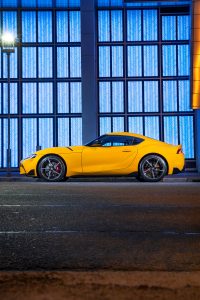
[review]
Toyota’s Supra is, of course, a re-bodied BMW Z4 and built in Austria.
It’s been a couple of years since we last drove the two-seater but age has not wearied the GR foundation member.
Launched here in 2019, Supra received a shot in the arm back in December, 2020 with a 35kW boost in power and additional bracing under the bonnet to improve handling.
Then, in November, 2021 wireless Apple CarPlay was added.
In April last year Supra went to a full model update with the availability for the first time of a manual version, along with re-tuned steering and suspension.
New colours and wheels also made an appearance.
What’s it cost?
There are two models, GT and GTS, priced from $87,000 and $97,000 respectively, plus on-roads.
Premium paint adds $575. GTS offers two exclusive options: alcantara leather and matte grey paint – each $2500.
Both models feature an integrated rear spoiler that recalls the shape of the first Z4 launched 20 years ago now.
Standard kit includes dual zone climate air, keyless entry and start, heated, eight-way power adjust leather-accented sports seats, 18-inch wheels with red brake calipers, adaptive LED headlights, LED tail lights, auto high beam, auto lights and wipers and an auto dimming rear view mirror.
Providing infotainment is an 8.8-inch touchscreen with Bluetooth, voice recognition, AM/FM/DAB+ radio, satellite navigation plus a wireless phone charger and 205 watt 10-speaker audio.
Missing is Android Auto, wireless or otherwise.
For those that want the lot, the GTS adds larger 19-inch wheels, head-up windscreen display and premium 425 watt, 12-speaker JBL audio – the standard system is not too shabby though.
The new 19-inch forged alloys are stronger and bring a weight saving of 1.2kg per wheel.
Supra still doesn’t have a safety rating, but a comprehensive suite of driver assistance includes active cruise control (ACC), front collision warning with brake function and daytime pedestrian and daytime cyclist detection, lane departure alert, speed limit info and active speed limiter.
Additional safety features include seven airbags, blind spot monitor, rear cross-traffic alert, rear view camera, front and rear parking sensors with rear end collision warning plus tyre pressure monitoring.
Supra is covered by a 5-year unlimited kilometre warranty and capped-price servicing which works out at $380 every 12 months for five years.
Service the car with Toyota and you get an extra two years on the drivetrain.
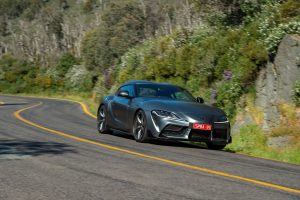
What’s it go like?
BMW’s 3.0-litre straight six is a gem, with twin scroll turbocharger and variable valve control, and now pumps out a healthy 285kW of power and 500Nm of torque.
It’s paired with either a six-speed, rev-matching manual or sports-tuned eight-speed automatic transmission with paddle shifts, Normal and Sport modes, plus launch control.
Maximum torque is available across a wide band, from 1800 through to 5000rpm, and the dash from zero to 100km/h has been trimmed to 4.1 seconds in the auto. The manual is good for 4.4 seconds.
With a 52-litre tank, fuel consumption is a claimed 8.9L/100km and it takes premium 95 unleaded.
Underpinning this performance are Brembo brakes (four-piston at the front), adaptive suspension and an active limited slip rear diff.
A new driving mode called Hairpin+ allows one of the rear wheels to spin (presumably the inside wheel), helping the car to get around tight hairpin turns.
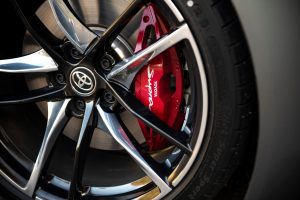
The GT rides on 18-inch wheels, while the GTS adds larger 19-inch wheels, with 255/35 front and 275/35 profile rubber rear, shod with Michelin Pilot Super Sports.
Our test vehicle was the pricier GTS grade finished in Copper Grey with optional tan interior.
You can just catch the copper tones in strong sunlight.
But let’s get something up front before proceeding. Supra sits extremely low, with a wide stance, low centre of gravity and perfect 50/50 weight distribution.
That’s a terrific setup for handling, but it makes the car extremely challenging to get in and out of – even for limber millennials.
In fact, there’s a bit of a knack to it and it could well be a deal breaker, so be sure to give it a try.
Once you’re in, the cabin and seats are reasonably comfortable, with plenty of head and legroom.
But vision is limited, especially looking over your shoulder.
The ride is overly harsh and it can sound like rain on a tin roof on all but the smoothest surfaces.
The din is exacerbated by the open area behind the seats which acts as a kind of sound resonator.
There’s not much in the way of stowage in the cabin, with provision for keys, your phone and a couple of drink holders, but that’s about all.
The small, slim door pockets are virtually useless – even your wallet could end up in the boot.
On a more positive note, the Supra feels quick, aggressive and engaging to drive.
It’s so much more exciting than the high-performance EV that we drove previously.
You can choose between Sport and Normal drive modes.
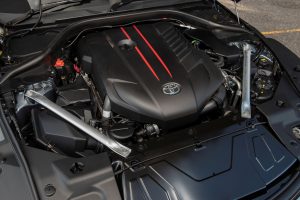
Sport mode amplifies the engine note, as well as delays gear changes, firms up the dampers and weights up the steering.
It also blips the throttle on down changes and adds some nice snack, crackle and pop to the exhaust on throttle overrun.
But with sport mode comes a harsh ride, moving from bearable to crash, bang, horrible – and it’s best reserved for smooth roads or the track.
Fortunately, these settings can be dialled in or out individually in the setup menu – so you can have the engine sound with the softer ride option.
We noted a half second or so of hesitation from the throttle in Normal mode, which seems to come from changing down more than a single gear at a time. This largely disappears in Sport mode.
Interestingly, we didn’t find ourselves reaching for the gear change paddles right away in the Supra, as the car is extremely agile and responsive left to its own designs, makes the right choices at the right time.
On wet, winding mountain roads, however, pulling gears with the shifters adds to the experience and the engine braking is reassuring, helping to maintain control when braking hard into corners.
Steering is pin sharp, responding to the slightest touch, while the brakes bite deep and hard into corners, with the occasional bit of twitch and squirm from the rear end.
Point the Supra at a hairpin and it goes around like a slingshot.
As before, passengers miss out on any sort of handle to hang on to – even the door handle doesn’t lend itself to the job.
We were getting 9.7L/100km after close to 300km. Not bad considering a good part of that was thrashing it while dodging potholes and roadworks.
Get a flat and a space and weight-saving tyre repair kit is provided.
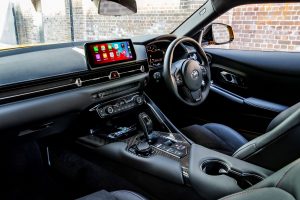
What we like
- Looks
- Performance
- BMW technology
- Exciting car to drive
- Pin sharp steering, braking and handling
- Digital speed and speed limit notification
- Entertaining snack, crackle and pop from the exhaust in sport mode
What we don’t like
- Difficult to get in and out
- Left-hand blinkers (thanks BMW!)
- Ultra-low, non-driveway-friendly front spoiler
- No warnings for speed cameras
- Nothing for passengers to hang on to
- Cheap low tech instrument panel
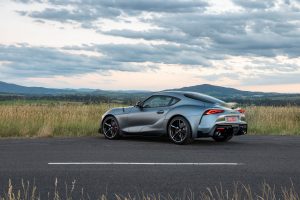
What over-50 drivers need to know
No.
Whatever thoughts you may be harbouring about this car, the answer is no.
Unless you happen to be a skinny ex-acrobat, you are NOT going to enjoy folding your old bones in and out of the ergonomically challenged cabin – over and over again.
For that reason and that reason alone the Supra spent most of the time sitting in the driveway during the week we had it on test.
Knowing the challenge ahead we saved all our testing for the one day, taking the car for a very long drive, to test its limits.
A 2.0-litre Z4 will set you back the same as the Supra GTS.
The 3.0-litre M40i is $40,000 more, before any extras.
Both Z4s are convertibles with a soft top (the coupe is not offered here).
For some the badge is of paramount importance, for others such as myself it’s more about the performance – oh, what a feeling!
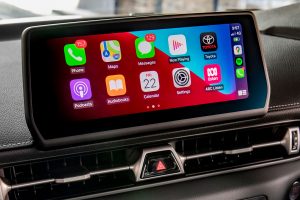
seniordriver comments
Chris is fairly unequivocal that the Toyota Supra won’t suit most over-50s, and we can understand why. A car that’s difficult to get in and out of can be a real chore on an everyday basis. The real question here, though, is whether you actually want to use the Supra every day, or if it’s just a superb sports car that you’ll want to take out on sunny days.
That’s a decision we have to leave to you, but we’ll take a little discomfort for a proper driving experience every time.
Another consideration is whether you’re swayed by the badge. Most people will agree that the Toyota interconnecting ovals fall a fair way short of the BMW badge in the prestige stakes. But the BMW cache comes at a substantial premium: the Z4 M40i is a hefty $139,800 – $42,000 more than the Toyota. Of course, you could always settle for the Drive 20i variant that makes do with a 2.0-litre four-cylinder engine that produces around half the power of the 3.0-litre engine. And keep in mind that if you choose the BMW over the Toyota, you’ll have to fill it (either variant) with 98 RON fuel instead of the (slightly) cheaper 95 that the Supra requires.
Sadly, the car that in our opinion sat closest to the Supra has now priced itself out of contention. The Jaguar F-Type coupe 3.0-litre V6 started from $121,212 in 2019 (you could buy yourself the 2.0-litre from $107,012). The 2.0- and 3.0-litre versions are now just a memory and the only engine choice for Jaguar buyers is the 5.0-litre V8, but prices start from $183,200. Despite the price difference, the Jaguar F-Type 75 is a lot closer to the Supra than you might think. Naturally, it gets more power (331kW as against 285), more torque (580Nm versus 500Nm) but actually gets to 100km/h half a second slower.
